How Charlie Scott chose UNC and became the Tar Heels' first black scholarship athlete

The following is excerpted from GAME CHANGERS: Dean Smith, Charlie Scott, and the Era That Transformed a Southern College Town by Art Chansky. Copyright © 2016 by Art Chansky. Published by the University of North Carolina Press. Used by permission of the publisher.
Charlie Scott had reached a pivotal crossroads. At age 17, two years after he had moved by himself to North Carolina from New York City, all his hard work had brought him to the moment he dreamed would be his escape from the streets of Harlem: acceptance of a major college scholarship. And it looked like Davidson would be the choice.
“Lefty was the first guy to recruit me,” Scott remembered of Wildcats coach Charles “Lefty” Driesell. “If there was no Lefty, there would be no Charlie Scott.”

Game Changers
by Art Chansky
Dean Smith, Charlie Scott, and the era that transformed the southern college town of Chapel Hill, North Carolina.
When word got around that Driesell had a black recruit all lined up and that he had good enough grades and SAT scores to get into Davidson, the rest of the college basketball world, at least in the South, quickly discovered Charles Thomas Scott.
Dean Smith first found out about Scott through UNC radio announcer Bill Currie, while on the bus ride back to Chapel Hill following a 70–69 loss at Virginia on Jan. 15, 1966.
The still-besieged UNC head coach, in his fifth season, had just lost to a school that didn’t take basketball seriously. The Cavaliers had an assistant on the bench who was also the lacrosse coach in the spring. Smith was sitting gloomily, taking notes, when Currie stopped by his seat. “Ol’ Lefty’s got himself a black player coming in next year,” Currie told Smith. “He’s visiting Duke this weekend.” Smith looked up and said, “If he’s going to visit Duke, he must not be all set for Davidson.”
Currie reported that Scott was tearing up opponents at Laurinburg Institute, whose headmaster and basketball coach, Frank McDuffie, had been coming to Carolina games for several years with Harvey Reid, then a high school coach whom Smith had asked to be on the lookout for a quality and qualified African American player. Smith called McDuffie, who confirmed that Scott was visiting Duke that weekend and West Virginia the following week—and that Scott hadn’t signed anywhere yet.
McDuffie encouraged Smith to attend Laurinburg’s next game to scout Scott, who was averaging almost 30 points and 12 assists. Smith did not want to miss any of the Tar Heels' practices but said he might send one of his assistants.
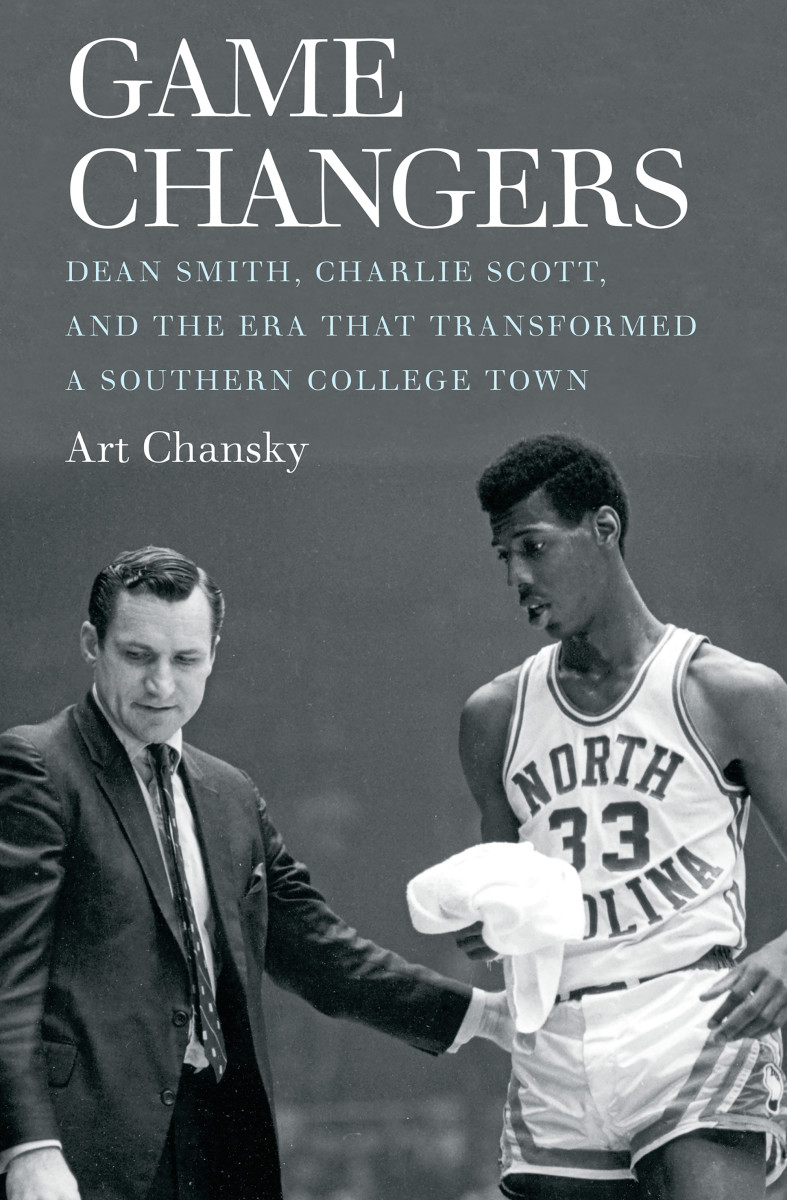
Larry Brown, a future Hall of Fame coach in his own right, was already scheduled to fly to Indiana to see guard Rick Mount, whose prowess was about to make him the first high school athlete ever to grace the cover of Sports Illustrated. So Smith assigned Lotz to make the short trip to Laurinburg.
Brown called the basketball office the next day, and Lotz answered the phone. “Hey, the guy I saw last night is better than the guy you saw,” Lotz needled. Brown said he doubted it. Smith, wanting a second opinion, instructed Brown to check out Scott himself. A few days later, after leaving the tiny Laurinburg gym, Brown could not wait until the next morning to tell his boss what he had seen. He pulled into a gas station and used a pay phone to call Smith at home.
“Coach,” Brown said, “I saw Rick Mount this week and I saw Charlie Scott tonight. Charlie is better.” When Smith expressed some doubt, Brown insisted, describing Scott’s bullet speed and slashing style that would later enthrall Tar Heels fans. “Better athlete, jumps out of the gym and shoots it from outside. You have to come down here and see how fast he is.”
The next day Smith and McDuffie had a longer phone conversation, during which Smith began to understand why McDuffie might want his latest star to play for the state’s flagship university. McDuffie was born and reared in North Carolina, and before sending dozens of kids off with football and basketball scholarships he had serious interest in preparing them to graduate from college.
McDuffie told Smith that Scott had talked about maybe becoming a lawyer or a doctor, and he invited the Carolina head coach down for their game the following week. “We had a rule that I had to see a player play before offering a scholarship,” Smith wrote in his autobiography, “so I drove down to watch a game and brought along some friends to help recruit when meeting with the McDuffies and Charles after the game. Accompanying me were Frank Klingberg, a Carolina history professor, Thal Elliott, an African American member of Binkley Baptist and a medical student at the university, and Dan Pollitt, a Carolina law professor who at the time had just been featured in U.S. News & World Report as one of Lyndon Johnson’s ‘idea men.’”
They watched Scott play, and Smith concurred with Brown and Lotz on his athletic ability. The combination of Scott’s athleticism and academics, however, made him by far the best current candidate to become the first black scholarship athlete at UNC. After the game, Smith met Scott for the first time.
“Frank and Mrs. McDuffie welcomed us to their home and were most hospitable,” Smith later wrote of the conversation. “Coach McDuffie said that while Charlie had made an initial commitment to Lefty Driesell at Davidson in September, he had since backed away from it and was open to recruitment. Mrs. McDuffie, who was the dean of students, covered the academic situation while Coach McDuffie talked basketball. Still, most of the 90 minutes were spent discussing black-white relations at the university and in the town of Chapel Hill.”
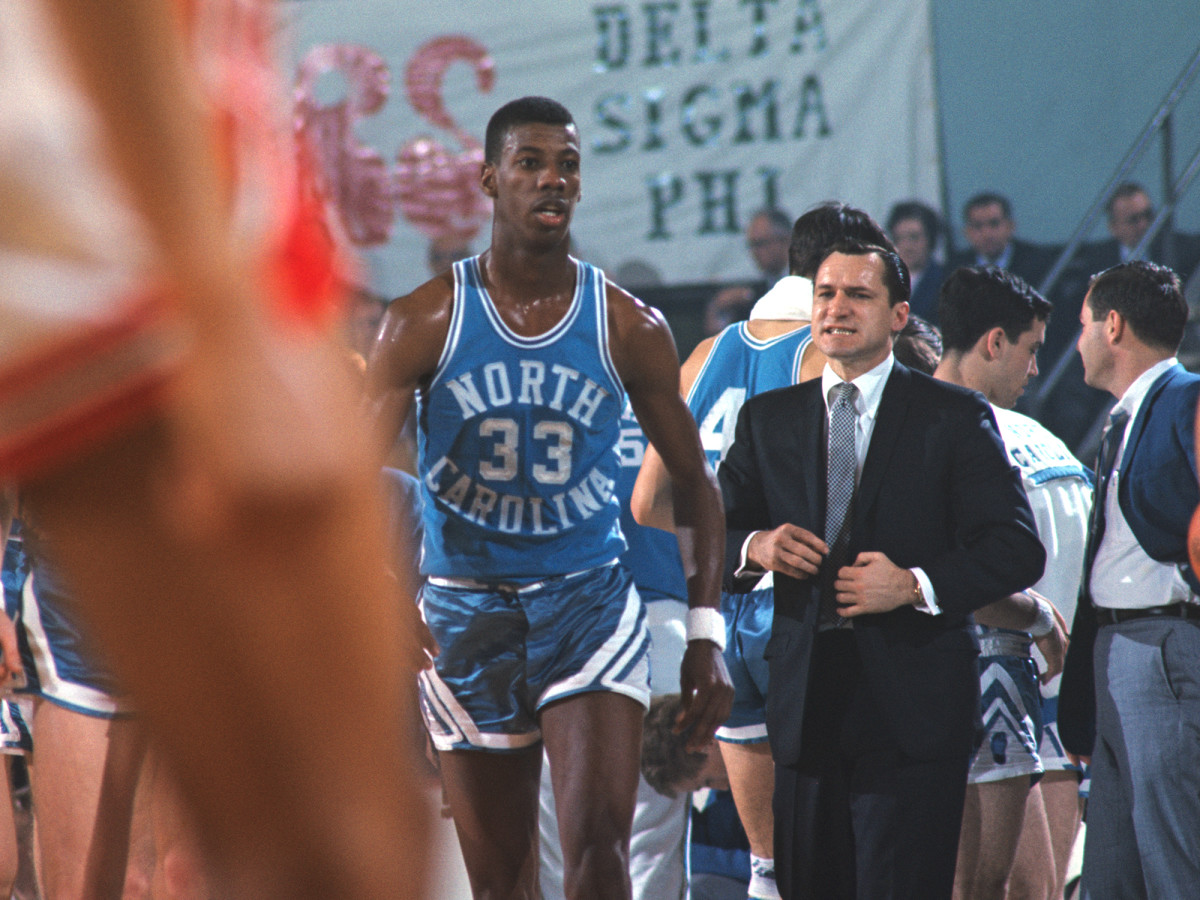
Although included with Charlotte, Greensboro, and Winston-Salem as among the first communities in North Carolina to desegregate schools, Chapel Hill’s change did not come smoothly for the liberal college town. A full five years after the Brown v. Board of Education Supreme Court decision declared “separate but equal” unconstitutional, Chapel Hill had done exactly what the rest of the South had done to open up its schools—nothing. In 1959, in fact, there were fewer black students enrolled in North Carolina public schools than in 1957. School systems denied hundreds of requests across the state for black students to attend white schools.
The North Carolina legislature had passed the “Pearsall Plan” in 1956, which was designed to slow the pace of desegregation, some say, with the hope that it might not work and go away. Also referred to as the “Freedom of Choice” plan, it could be customized by individual school boards and required families that wanted their children to go to schools with the opposite race to apply for a transfer. The first Chapel Hill application was filed in 1957 by African American parent Preston R. Weaver, who favored a white elementary school for its superior facilities and art instruction. The school board denied the transfer, saying the request was inadequate.
Finally, in 1961, the school board ruled that first-graders who could walk to an opposite race school could go there. Over the next two years, with the help of redistricting, 80 black and 70 white grade-schoolers crisscrossed over racial barriers. The junior highs and high schools remained segregated.
In an editorial in the Chapel Hill Weekly, Jim Shumaker called out the plan as “token integration,” writing: “In the nine years since the Supreme Court’s desegregation ruling, Chapel Hill has accomplished no more than legal window dressing. Five formerly white schools have token desegregation; three Negro schools remain completely segregated. . . . The official policy has been one of legal compliance, while the School Board’s official acts have served to perpetuate segregation.”
Chapel Hill’s business community was also slow to integrate. The Pines, a local restaurant, was believed to have served one black customer over a five-year span—the theology student who went to dinner there with then-Tar Heels assistant coach Dean Smith and Robert Seymour, Smith’s pastor at Binkley Baptist Church, in 1959. But after President Lyndon Johnson signed the Civil Rights Act to into law on July 2, 1964, The Pines relented for good. “We’re not going to disobey the law of the U.S. government,” said Leroy Merritt, the restaurant’s owner. “If colored people come in and behave themselves, they’ll be treated just like everybody else,” he continued.
The university, for the most part, had roughly 50 African-American students at the time and never engaged in the civil rights conflict. President Bill Friday said he had good reasons why the liberal-labeled flagship university had stayed out of the desegregation fray. “It was not our jurisdiction, and in those days everybody was super-sensitive about who was responsible for what,” he said. “That was an issue in the town government.”
The town and the campus calmed considerably over the 1965-66 school year, with Chapel Hill Mayor Sandy McClamroch disbanding all the local committees that had fought segregation so passionately. The new Chapel Hill High School was nearing completion, planning to open with integrated grades 10 through 12 in the fall of 1966, ironically, the same time Charlie Scott would be enrolling in a college. Dean Smith was working to ensure that college would be North Carolina.
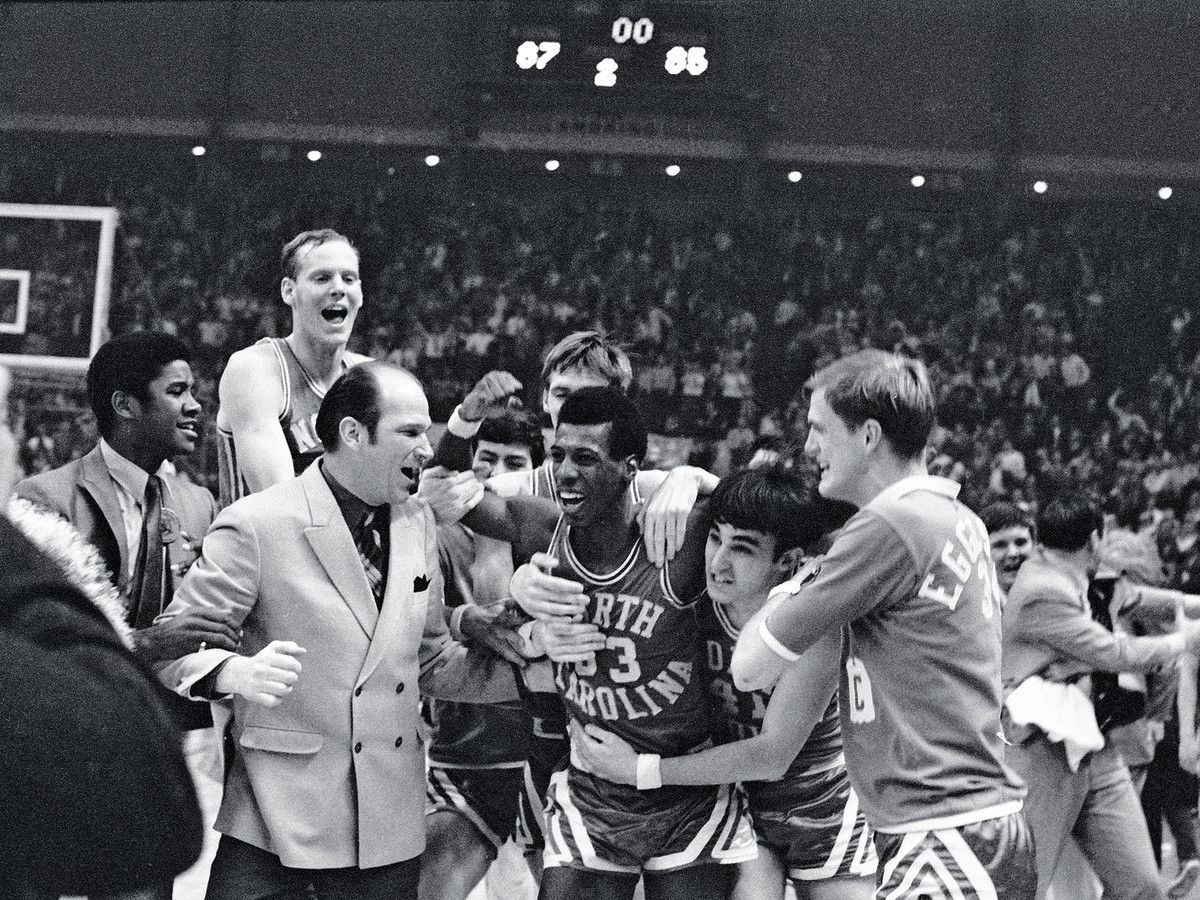
In the spring of ’66, though, it still seemed that Scott’s choice would be Davidson. However, an incident near campus at a restaurant named the Coffee Cup had made the McDuffies, if not Scott himself, question the decision.
“Early in my senior season,” Scott recounted, “we had gone to Charlotte and Coach McDuffie said let’s go up and see Lefty because Davidson was only 30 miles away. We went to the basketball office and [assistant coach and future Virginia coach] Terry Holland said Lefty was down at this restaurant eating, and he would take us over there. We got there, went in, and Lefty was eating black-eyed peas and rice. Lefty said to sit down and order something to eat. So we sat down, and the waitress took the order. Five or 10 minutes later, the owner of the restaurant came over and said to Lefty, ‘Coach, I’m sorry, but my wife and I don’t serve n------ on this side of the restaurant.’ Lefty was really embarrassed, and the McDuffies [were] very angry.”
Of course, none of this could have been known to Smith when he visited Laurinburg. At the end of the time in the McDuffie home, Smith asked if Scott could come to Chapel Hill for the annual spring Jubilee weekend in late April, at which both the Temptations and Smokey Robinson and the Miracles would be performing. In the intervening weeks, Scott finished his senior prep season, leading the team to a 23–3 record. Meanwhile, he had to decide on Davidson or another of the schools chasing him. He visited UCLA, Villanova, Purdue, N.C. State,and Wake Forest during March and April.
Still, McDuffie told Scott that he could not sign until he completed his visits, some of which were scheduled when he got back from the weekend in Chapel Hill. That only made Scott surer he would end up at Davidson. “If you asked me which coach I loved the most, it was Lefty, by far,” Scott said. “I was his friend. Lefty did anything I wanted. Of course, I was a 17-year-old kid who never had anything. He would give me anything I wanted. Plus, a doctor in Laurinburg, a Dr. Richardson, was a Davidson grad. I wrecked his car; he gave me a car to drive and I tore it up, and he said that’s okay and don’t worry about it.”
Despite having seen segregation and bigotry up close, Scott still liked the idea of being the first African American athlete at the southern college of his choice.
“It was the only time I had felt wanted in my life,” he said. “Subliminally, it was the admiration. The way I was recruited by Davidson and North Carolina was different from the way I was recruited by UCLA and Purdue.”
Smith received one threat from a donor to the Rams Club, the group that raises money for athletic scholarships, that it would cost UNC $1 million in endowment money if he signed Scott or any other African American. Smith called Ernie Williamson, who ran the Educational Foundation (aka the Rams Club), and found out that this particular donor had never given more than $10 a year.
On Friday, April 29, 1966, McDuffie drove Scott to Chapel Hill for the Jubilee weekend and his player’s official recruiting visit. He dropped Scott in front of Carmichael Auditorium, where the Tar Heels had just completed their first season in a new home.
Scott went to the basketball office. He was greeted with a warm smile by Betsy Terrell, the secretary whom Smith considered a “third assistant” for her indispensable ability to handle situations while the coaches were away. Terrell handed Scott two tickets to the Temptations concert that night. Compared to hearing a racial slur at an eatery in Davidson, Scott’s weekend in Chapel Hill had gotten off to a considerably different start.
On Saturday morning, Smith had set up a meeting for Scott with his friend Chris Fordham, the assistant dean of the medical school. Scott and Fordham spent several hours together, part of the time donning surgical masks and viewing an actual operation. Back at the basketball office, Smith asked Scott the question he asked many recruits: What name would he like to be called? Scott said everyone knew him as “Charlie” or “Scotty,” but that he preferred the name his mother had given him at birth, Charles. From that point on, Smith always called him Charles.
After that, Scott was off with Dick Grubar and Joe Brown, two members of the freshman team at Carolina who would be playing on the varsity by the time Scott arrived. The three walked around campus on a perfect spring day in Chapel Hill. Live music blared from fraternity houses. Grubar, who was from upstate New York, had tipped off a couple of his friends at the Kappa Alpha house that he might stop by with a star basketball recruit who was black. “KA was one of the most Southern houses on campus, but everyone there was great to Charlie,” Grubar said. “They knew he was a basketball star we wanted, and we all had a blast. They might have been all white and Southern, but they were also big basketball fans.”
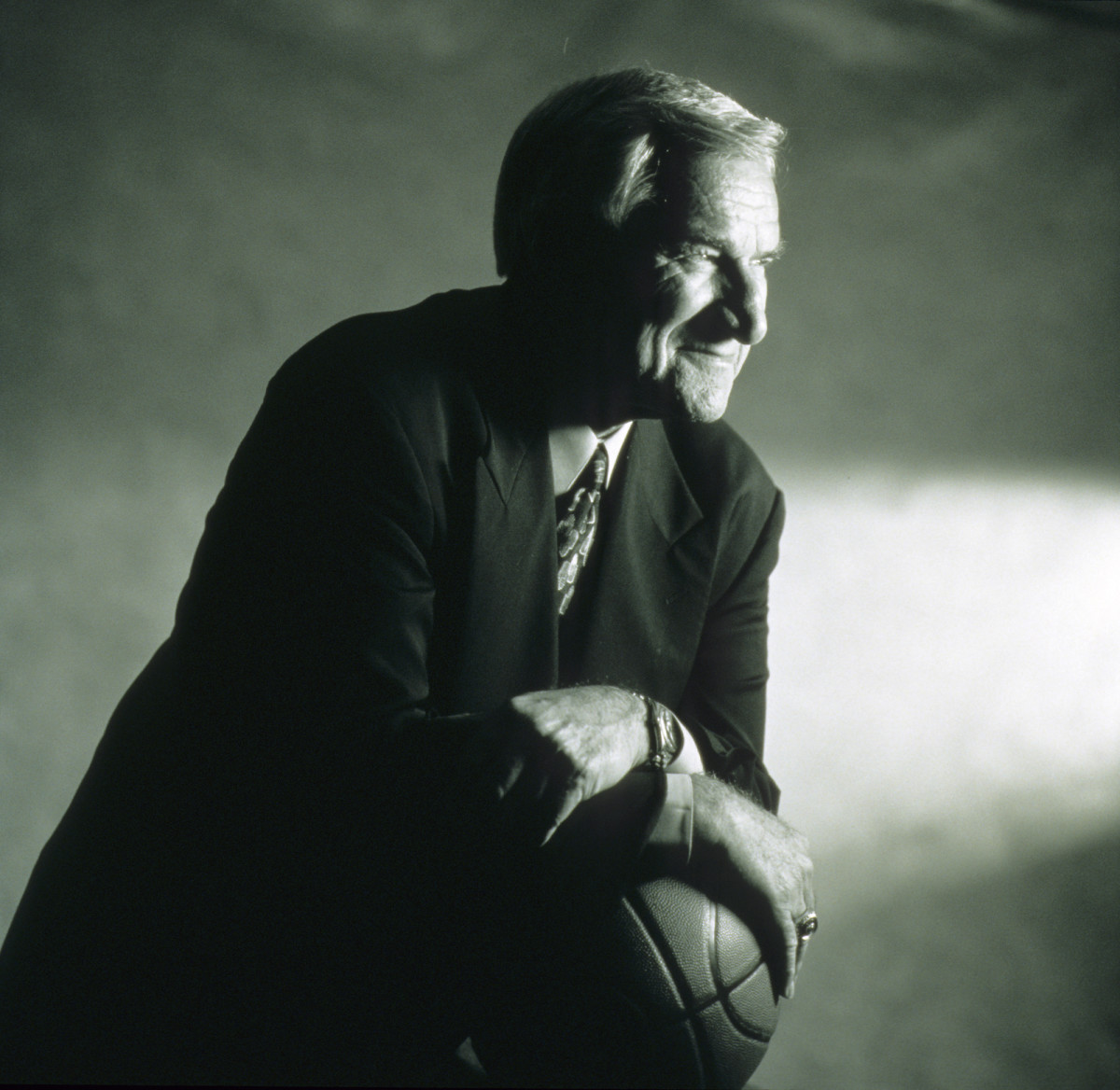
Before going to hear Smokey Robinson and the Miracles that night, they met up with sophomore forward Larry Miller, already the star of the team. The group went to dinner at the Ranch House, one of the most expensive restaurants in town, and all ordered chateaubriand. Lotz, who had clicked immediately with Scott, told Grubar to go anywhere and order anything. “The concert in Carmichael was great,” Grubar said. “It was a mostly white crowd, but Charlie seemed completely comfortable. We were up singing and dancing in the aisles. And afterward we went by the St. Anthony’s [fraternity] house, which was the most Northern fraternity on campus, and they loved Charlie, too. We had a pretty late night.”
Scott said years later, “What turned it around for me was going out with Dickie Grubar, Joe Brown and Larry Miller.” He added, “At other schools, I went around with guys I would never be playing with. Like at Duke, I went out with Steve Vacendak and Bob Verga. They would be gone after the next season. Coach Smith said, ‘These are the guys you will be playing with.’ That was the way he did things. It was smart.”
So too was Smith’s move to invite Scott to attend church with him on Sunday morning, which turned out to be a key piece of the weekend. “No other coach ever asked me to go to church with him,” said Scott.
At Binkley Baptist Church the next morning, Scott met black members of the congregation and heard Reverend Seymour deliver a sermon that touched on racial equality. After church, Lotz took Scott to lunch at the Rathskeller, a favorite restaurant of the coaches and many of the players, where most of the waiters were black. After lunch Scott went up and down Franklin Street a few times by himself. It turned out to be one of the most consequential strolls in UNC basketball history. “I wanted just to see how it would be when most people didn’t know who I was," said Scott. “I didn’t feel ostracized, I didn’t feel strained. The atmosphere was one where I wasn’t intimidated if they didn’t know I was a basketball player, so I felt comfortable.”
On the ride back to Laurinburg that afternoon, assistant coaches Lotz and Brown asked Scott the big question: Would he come to Carolina?
Scott said that he liked everything about the weekend and, yes, he could see himself playing for UNC. But he said that didn’t matter since McDuffie wasn’t letting him sign anywhere until he finished all of his recruiting visits. “I didn’t think it would go any further than that,” Scott said. “I pretty much thought that would be the end of it and I would still go to Davidson.”
When the group pulled into the parking lot at Laurinburg, McDuffie was there to greet them. Brown and Lotz confronted McDuffie with what Scott had told them in the car. “Larry and John told Coach McDuffie that I would like to go to Carolina, but he said I couldn’t sign anywhere yet,” Scott recalled in 2014. “And Coach McDuffie said, ‘No, he can sign to go there.’ I thought he would tell them I couldn’t sign yet. That’s why, looking back, Carolina was always where he wanted me to go. He was steering me in that direction.”
“My father had great wisdom,” said Bishop McDuffie, who took over Laurinburg after his father died in 1994. “He coached the basketball team, was the headmaster, and also directed the school band and the choir. He was like a Renaissance man. For Charlie to go to Carolina would be much bigger than anywhere else in this state. He would become part of history, part of the story, of both Carolina and Laurinburg.”
After Brown and Lotz departed, Scott and McDuffie spent Sunday afternoon together going over the respective pluses and minuses of Davidson and UNC. Among the 90 schools that had contacted them, there were only two real choices. Scott knew the social life at all-male Davidson was limited and that he would have to travel the 20 miles to Charlotte to find another black community. At UNC, it was only eight miles to North Carolina Central, a college founded for African-Americans. They also broke down the respective basketball programs and their immediate futures. By late Sunday afternoon, Scott had decided on UNC. The most difficult part was telling Driesell. When he finally made the phone call, Driesell’s wife, Joyce, said Lefty was recruiting in Texas and would have to call him back. Scott feared telling Driesell directly, and simply told his wife “I love Lefty the best, but Chapel Hill is just a better place for me to go to school,” before hanging up the phone.
McDuffie called Smith, who drove to Laurinburg on Sunday night with Lotz and Brown to get the news in person from Scott. They met at the McDuffie home, and after Scott went back to his dorm, the group sat at the kitchen table for a historic dinner, plotting how they were about to integrate college basketball in the South. While it is true that there were African American players at other ACC schools, and Vanderbilt had signed the first black player in the SEC, none of them would ever make the same impact as Charlie Scott at North Carolina.
The actual signing occurred on Tuesday in Frank McDuffie’s office because Scott wanted more time to personally talk to Driesell, who had flown back to try and change Scott’s mind. Stories of a confrontation between the coaches were downplayed for years, and Scott has since said, “I don’t remember any incident like that. But I don’t really know because I was probably hiding some place. I didn’t know how to tell Lefty I wasn’t coming.”
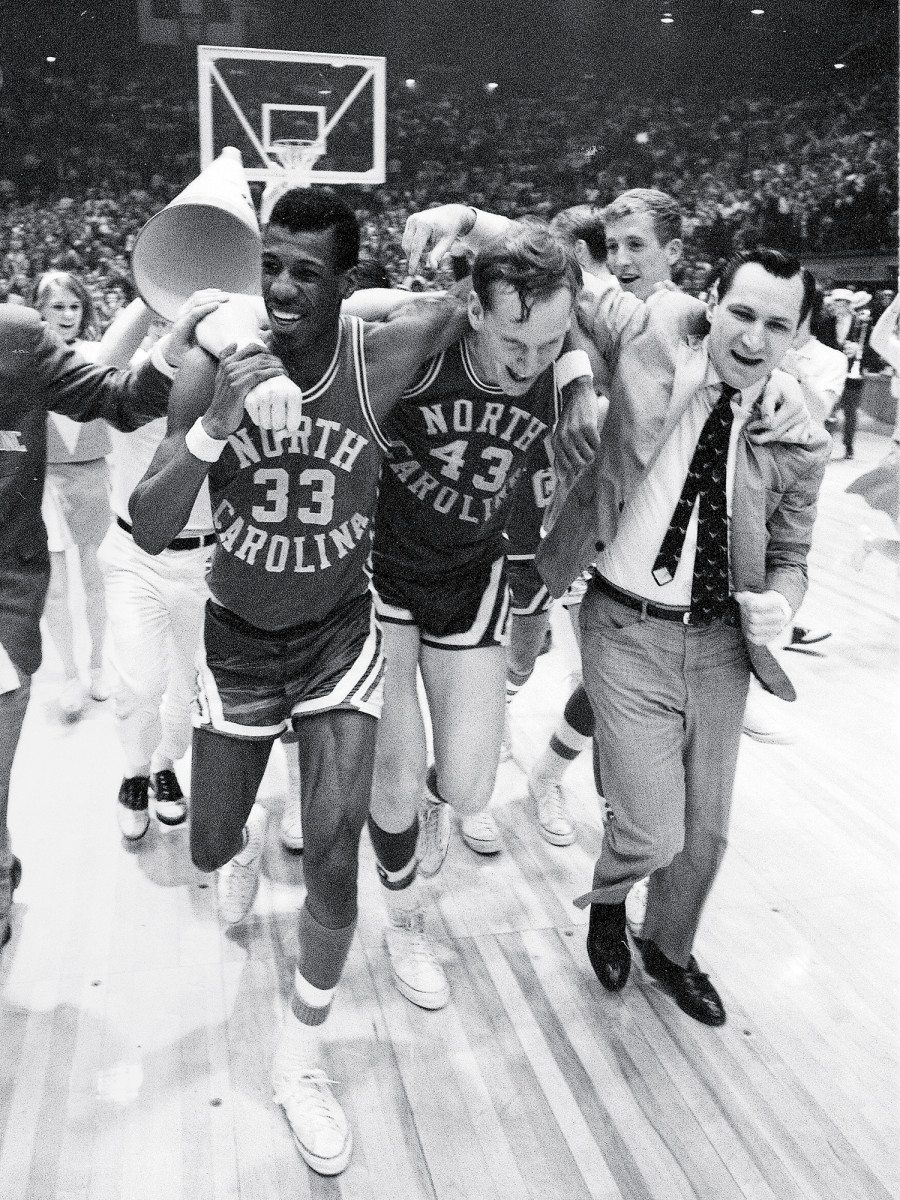
Scott, though, remained close with Driesell and visited him at least once a year after college. He pushes back tears when recalling the time Lefty pulled out a box of old letters from Scott and still had every one he had written to Driesell.
As for North Carolina, Scott told UNC Sports Information Director Bob Quincy the day he signed, “The campus is beautiful, and I think I will fit in with the student body. I don’t want to be just a basketball player. I want to be part of student life.” He recounted what he had observed on Jubilee weekend. “Chapel Hill is cosmopolitan, at least from what I have seen. I saw a few Beatniks on the street. Now, I want no part of being a beatnik, but it does show there is a tolerance on the campus, and I think that is important.”
Smith confirmed to the Daily Tar Heel that “the atmosphere for the Negro student” at UNC was a big part of Scott’s decision. In retrospect, it was somewhat naïve on Scott’s part and a stretch for Smith, who had to believe he had found an African American player strong enough to endure what was ahead.
That was the first and only time Smith talked extensively about signing a black player, emphasizing there were no restrictions on any high school students as long as they met UNC’s entrance requirements. “We recruited Louis Hudson about five years ago,” Smith told the DTH. “Carolina’s policy has been in this direction. . . . Scott’s the first one to have both the academic and athletic qualifications. Charles is a fine boy, and first-line student.”
That June, Smith spoke at Charlie Scott’s Laurinburg graduation ceremony, as the senior class valedictorian completed the first step of a dream he once thought unreachable on the streets of Harlem.
